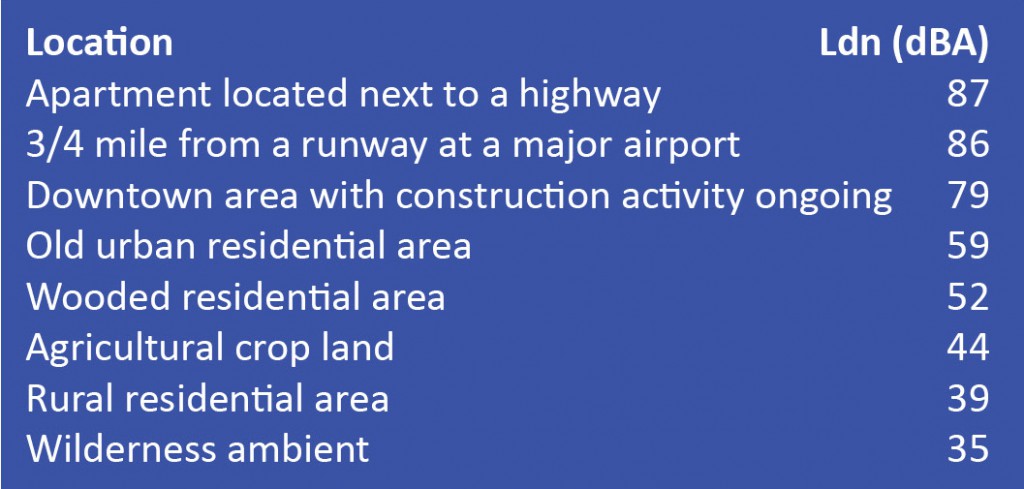Another issue of concern for the City Council is that of noise control. Noise control has also been a prime concern for the federal Bureau of Land Management (“BLM”), albeit in a different context from urban drilling. The BLM is responsible for management of federal lands, primarily in the western United States. Their goals can be difficult to manage simultaneously, as they are tasked with both the preservation of the land and wildlife and the development of natural resources for the benefit of the citizens.
In 1999, the BLM commenced a long-term study of drilling noise associated with activity in rural Wyoming. The goal of the BLM was to investigate the effects drilling noise may have on wildlife habitat areas, and determine if there was a need to implement additional sound protection in such a rural setting.
For comparison, below is a chart showing the day/night average ambient sound levels for various environments, as determined by the EPA: 
In their study, the BLM measured sound levels with respect to three different drilling rigs active in the Pinedale Anticline Project. The environmental impact statement gave a measured average noise at various distances from the pad site. At right are the measured noise levels at the closest distance to 300 feet, being the current setback distance under the Lubbock ordinance.

The BLM found that the noise levels associated with drilling at a distance of roughly 350 feet fell closely in line with the average background noise in urban residential neighborhoods, and were significantly less than the background noise associated with an urban downtown area.
With respect to drilling activities in the City of Lubbock, drilling has occurred almost exclusively along the Clear Fork formation, which runs in an east-west direction between Preston Smith International Airport and Loop 289. The area is primarily industrial and agricultural in nature, and the residential areas involved include areas around the Lubbock County Club and the Hillcrest Country Club. Texland has operated in these areas since the 1980s without receiving any noise complaints, and the reason appears to be evident from the BLM study results. That is, drilling with the current 300 foot setback results in noise levels comparable to that of the background ambient noise in a typical urban neighborhood. Issues regarding sound appear to be adequately handled by setbacks of 300 feet, without further setbacks required.
